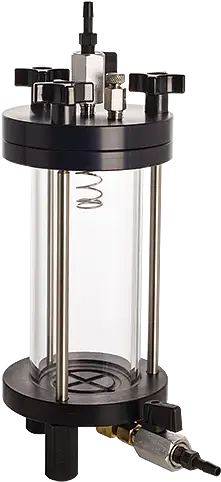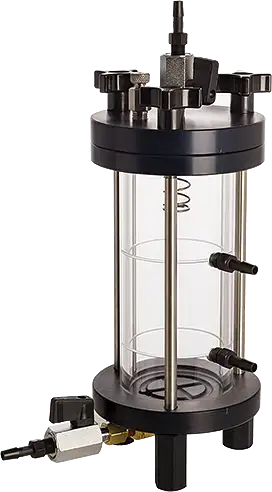Humboldt HM-5893 falling head permeameter cell is used in soil permeability testing, where the rate of water flows through soil is measured. This device finds application in various engineering projects, including the construction of dams, roads and buildings, as well as in environmental studies to assess groundwater movement and contamination risks.
Features:
- It features a spring mechanism in the top cap, ensuring consistent force application.
- This falling head permeameter cell has anodised aluminium end caps and a clamping ring for durability.
- It comes with valves and perforated screens for precise control and accurate measurements.
- This falling head permeameter cell offers portability and compactness for on-site testing convenience.
- It is equipped with a design optimised for granular soil analysis.
- The cell incorporates a falling-head method for laminar flow assessment.
- It features a user-friendly setup, facilitating efficient operation and reliable results.
Compatible Accessories:
Frequently Asked Questions:
Q. Why is soil permeability testing important?
A. Soil permeability testing helps engineers understand how water moves through the soil, which is crucial for designing effective drainage systems, assessing foundation stability and managing environmental risks such as groundwater contamination.
Q. What is the difference between falling head and constant head permeameter cells?
A. Falling head permeameter cells measure soil permeability using a decreasing water head, while constant head permeameter cells maintain a constant water head. The choice between them depends on the specific soil characteristics and testing requirements.
 Change Country
Change Country


